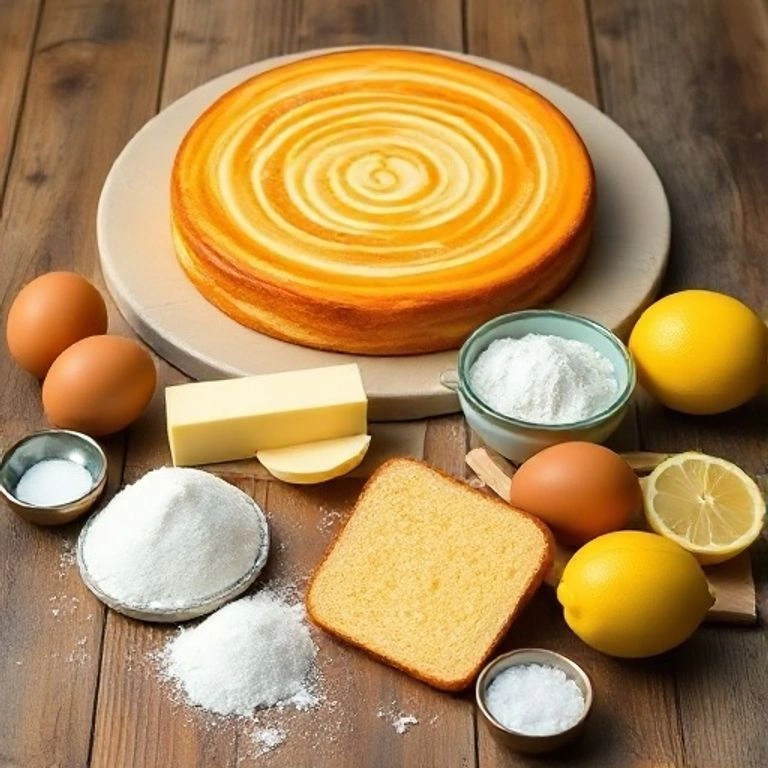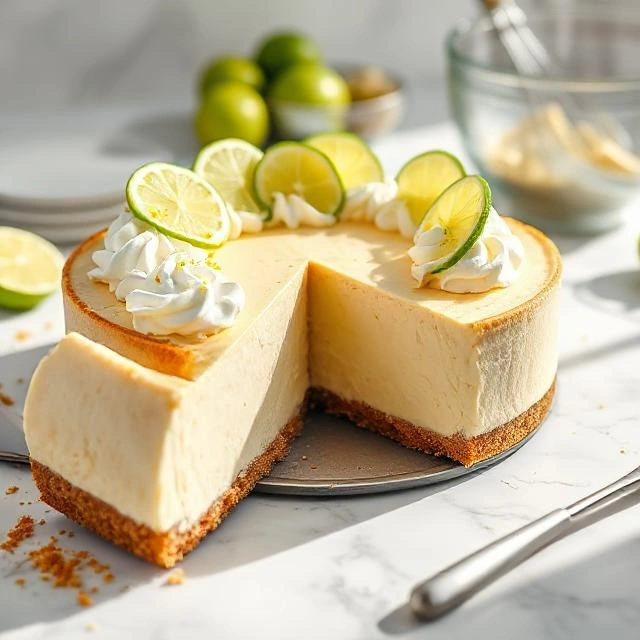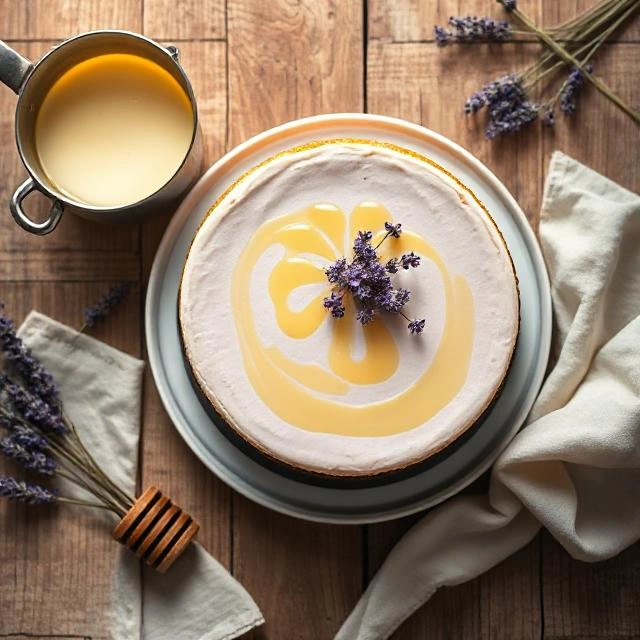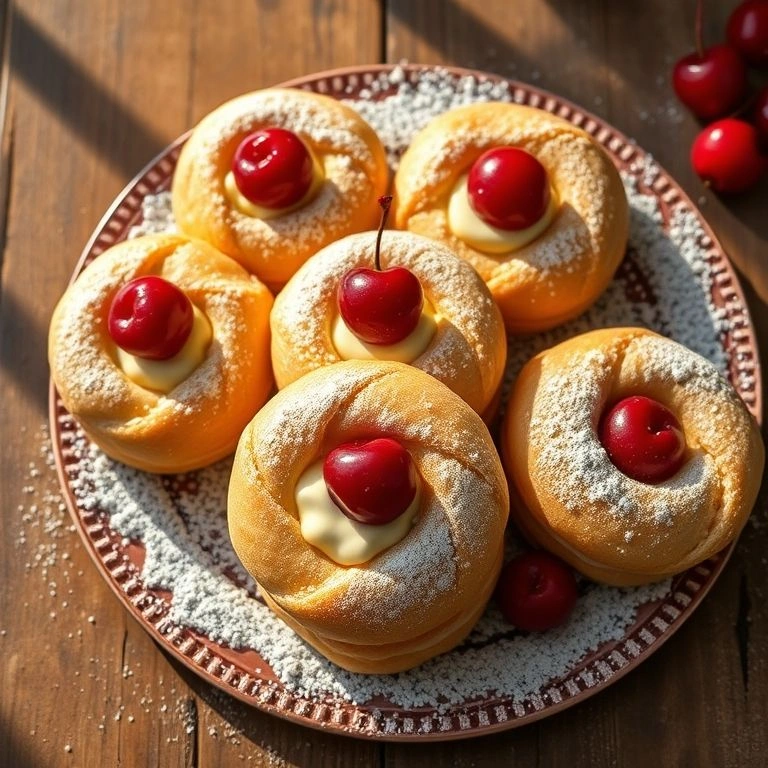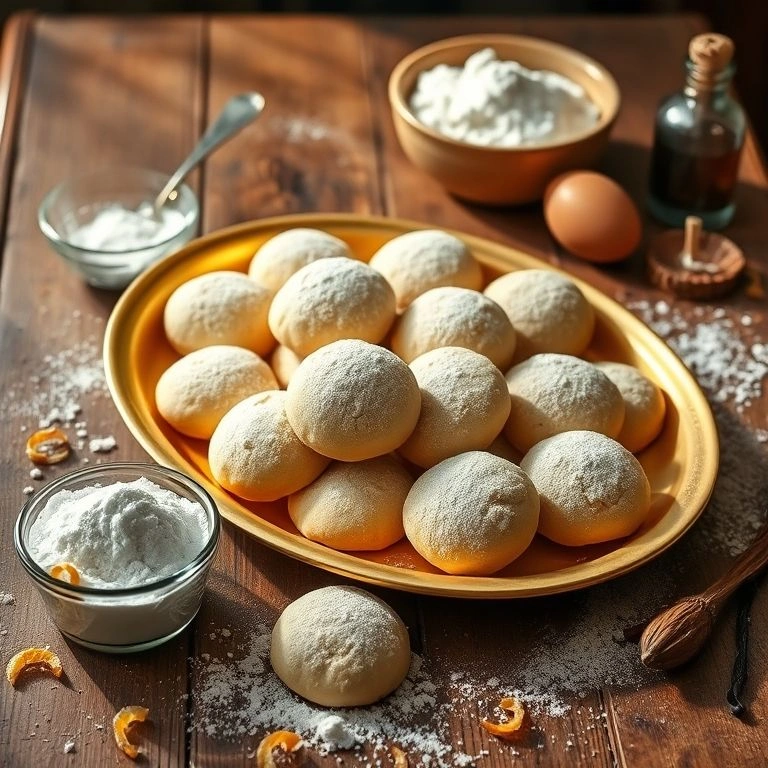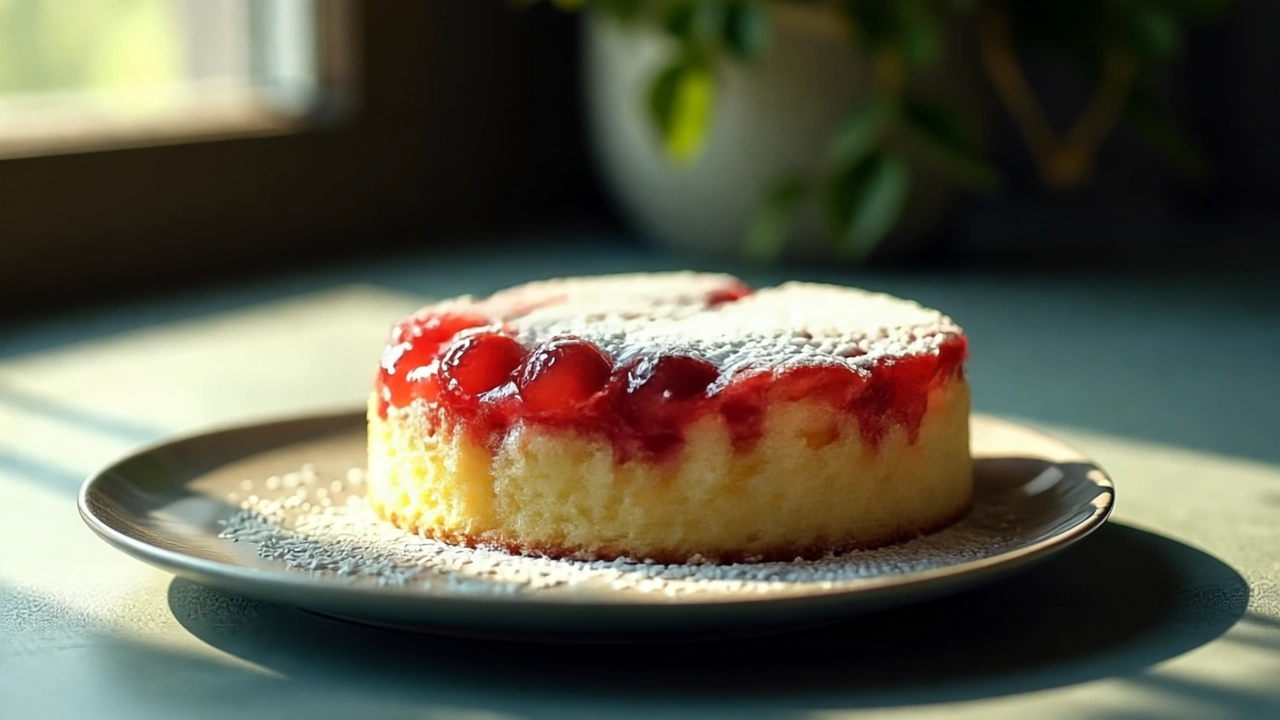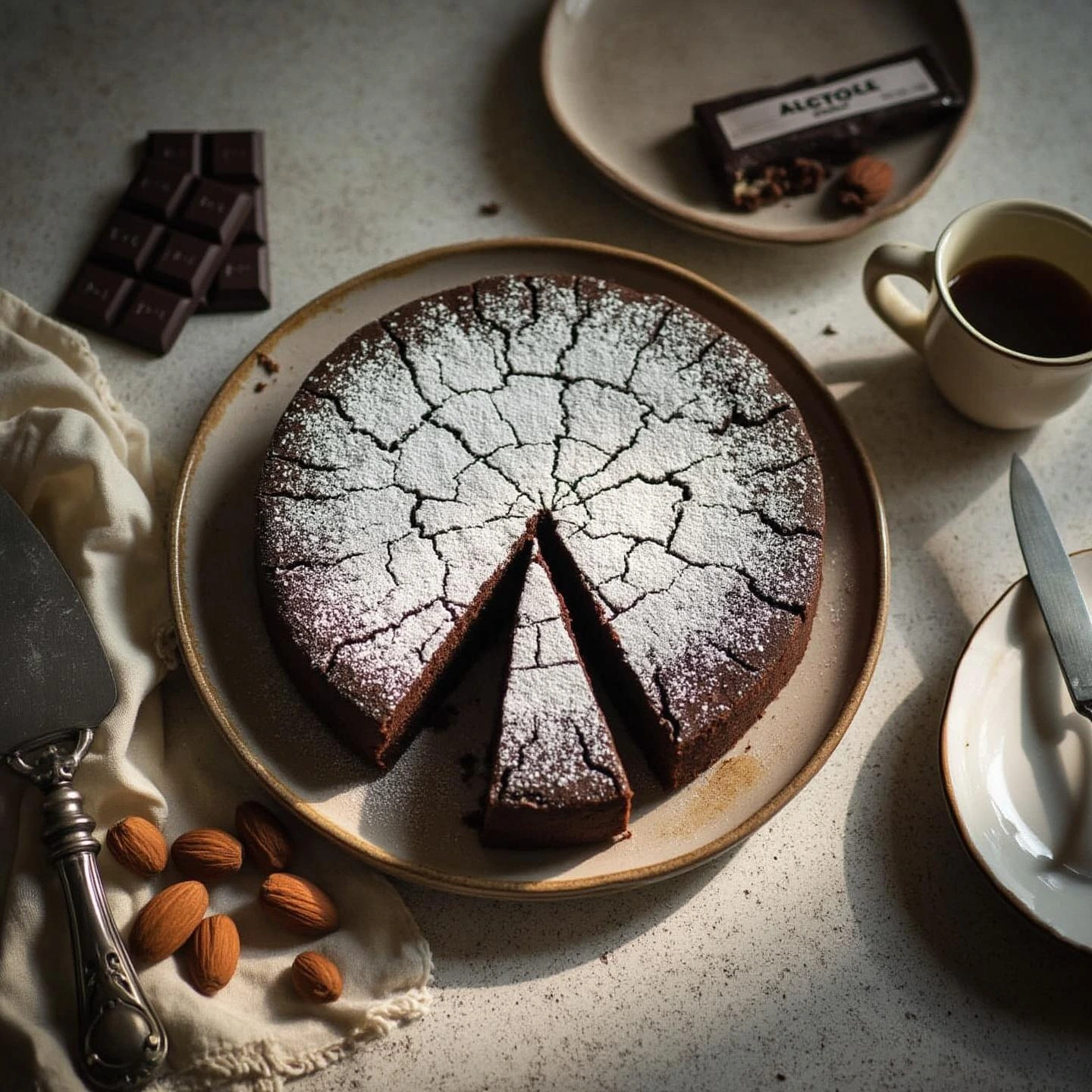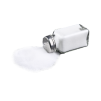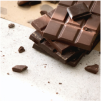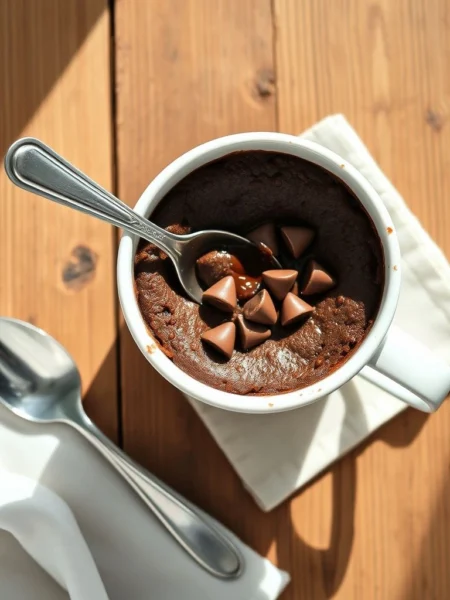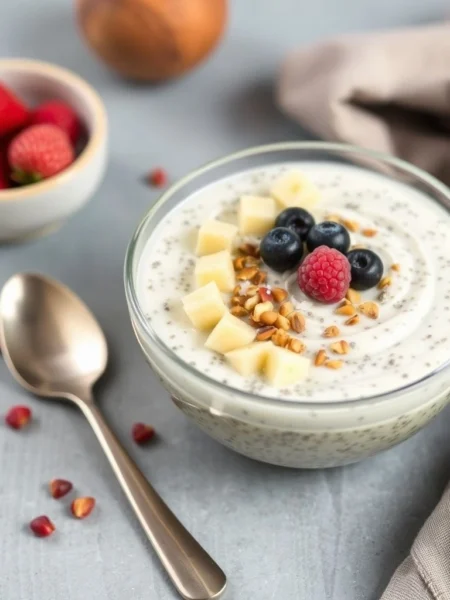Introduction
Have you ever marveled at the beautiful, concentric rings of a Baumkuchen cake in a high-end bakery? Often called the “king of cakes” in Germany, this spectacular layered dessert might seem impossible to create in a home kitchen. However, with some patience and the right technique, you can absolutely make this European delicacy yourself! In this guide, I’ll walk you through creating an authentic Baumkuchen cake that will impress your family and friends.
What is Baumkuchen Cake?
Baumkuchen cake, which literally translates to “tree cake” in German, gets its name from the rings that resemble tree growth rings when sliced. Traditionally, bakers create this cake by brushing thin layers of batter onto a rotating spit in front of an open flame. As a result, each layer bakes individually before the next one is added.
While professional pastry chefs use specialized equipment, we’ll adapt this technique for home ovens while maintaining the authentic taste and distinctive appearance of a true Baumkuchen cake.
The History Behind Baumkuchen
Before diving into our recipe, it’s fascinating to understand the rich history of this unique dessert. Baumkuchen cake originated in Germany but quickly spread throughout Europe and eventually to Japan, where it remains enormously popular today.
The cake’s history dates back to at least the 18th century. Interestingly, German bakers considered it a demonstration of their highest skills because the creation process requires extreme precision and attention to detail.
Essential Ingredients for Authentic Baumkuchen
To make a truly authentic Baumkuchen cake, you’ll need these key ingredients:
- High-quality unsalted butter
- Fresh eggs (separated)
- Granulated sugar
- All-purpose flour
- Cornstarch
- Pure vanilla extract
- Almond extract
- Lemon zest
- A pinch of salt
The quality of your ingredients will significantly impact the final taste, so use the freshest ingredients possible. Furthermore, make sure all refrigerated items reach room temperature before you begin.
Special Equipment Needed
Though we’re adapting for home baking, you’ll still need some specific equipment:
- A broiler or oven with broiler setting
- Several mixing bowls
- Electric mixer (stand mixer preferred)
- 9-inch springform pan
- Offset spatula
- Kitchen timer
- Pastry brush
Step-by-Step Baumkuchen Preparation
Step 1: Prepare Your Ingredients and Equipment
First of all, preheat your broiler. Then, thoroughly butter your springform pan and line the bottom with parchment paper. Additionally, position an oven rack approximately 6 inches from the heating element.

Step 2: Create the Batter
- In a large bowl, cream together 1 cup of softened butter and 1 cup of sugar until light and fluffy.
- Separate 8 eggs. Subsequently, beat the yolks and gradually add them to the butter mixture.
- Next, sift together 1 cup of flour, 2 tablespoons of cornstarch, and a pinch of salt.
- Gently fold the dry ingredients into the butter mixture.
- Add 1 teaspoon vanilla extract, ½ teaspoon almond extract, and the zest of one lemon.
- In a separate bowl, beat the egg whites until soft peaks form. Then, gradually add ¼ cup sugar and beat until stiff peaks form.
- Finally, carefully fold the egg whites into the batter.
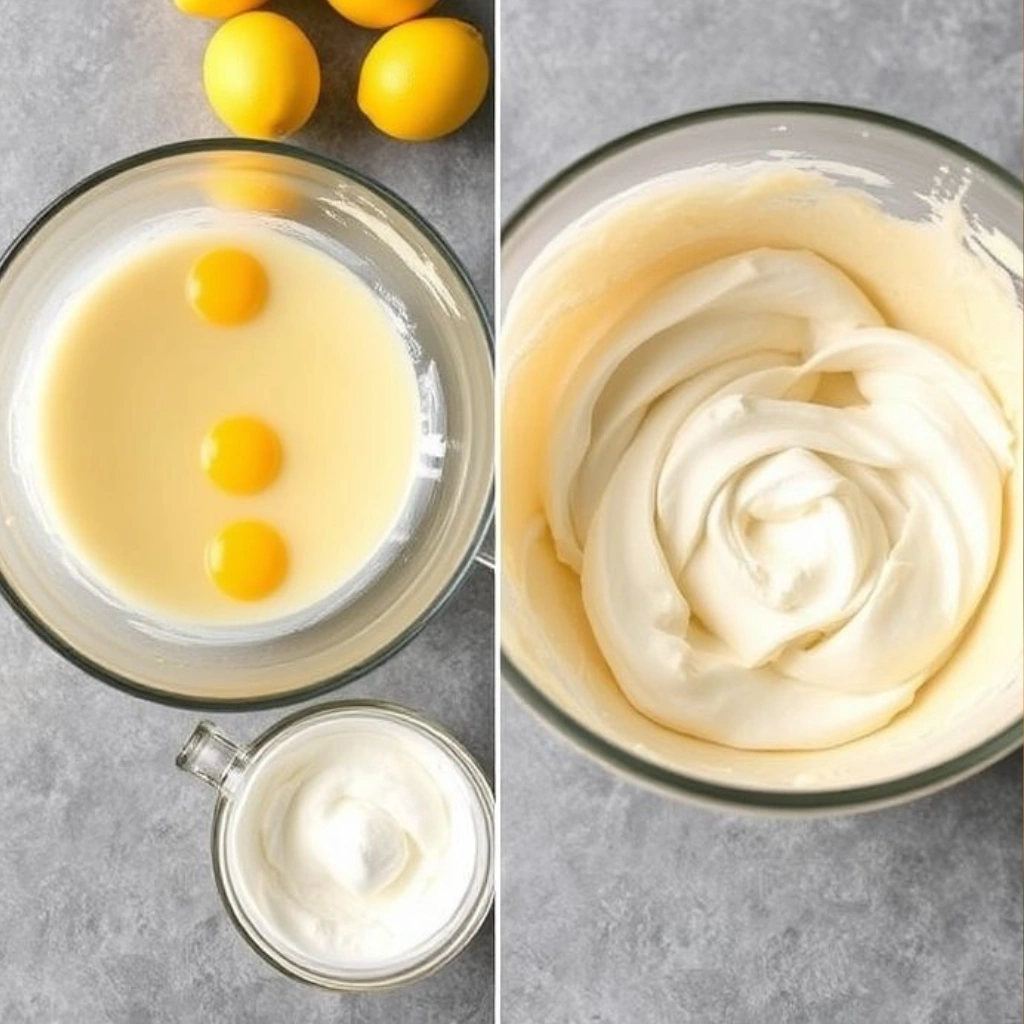
Step 3: Layer and Bake the Cake
This is where the magic happens! The distinctive Baumkuchen cake layers come to life through this process:
- Spread a thin layer (about 3-4 tablespoons) of batter on the bottom of your prepared pan.
- Place under the broiler for 1-2 minutes until golden brown. Watch carefully as it can burn quickly!
- Remove from broiler, add another thin layer of batter, and return to broiler.
- Repeat this process until you’ve used all your batter (typically 15-20 layers).
As you build the layers, you’ll start to see the characteristic rings forming. Without a doubt, this is the most satisfying part of making Baumkuchen cake!

Step 4: Final Baking and Cooling
After your final layer is broiled, transfer the cake to the center rack of your oven. Subsequently, bake at 350°F (175°C) for about 15-20 minutes to ensure it’s cooked through completely.
Allow the cake to cool in the pan for 10 minutes. Then, run a knife around the edge and release from the springform. Cool completely on a wire rack before glazing.
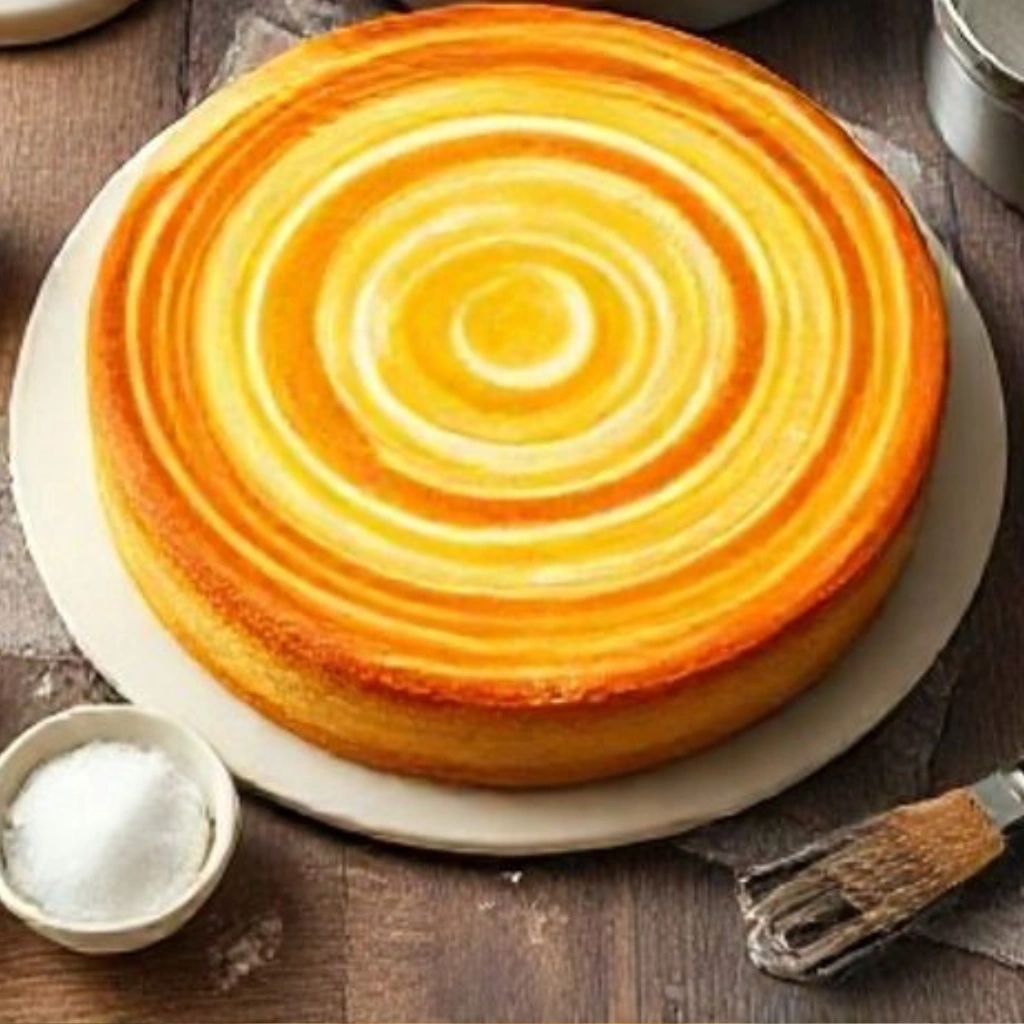
Traditional Apricot Glaze
To finish your authentic Baumkuchen cake:
- Heat ½ cup apricot jam with 1 tablespoon water until smooth.
- Strain to remove any fruit pieces.
- Brush the warm glaze over the entire cake.
- Let it set before adding the chocolate coating.
The Classic Chocolate Coating
No Baumkuchen cake is complete without its signature chocolate coating:
- Melt 8 ounces of high-quality dark chocolate with 2 tablespoons of neutral oil.
- Pour over the cake, ensuring even coverage.
- Let it set completely before serving.
For an extra decorative touch, you can use a fork to create a wavy pattern in the chocolate before it sets.
Troubleshooting Common Baumkuchen Issues
Making Baumkuchen cake at home can be challenging. Here are solutions to common problems:
- Uneven layers: Use an offset spatula to spread the batter as evenly as possible.
- Burning: Keep a close eye on the cake and rotate the pan if your broiler heats unevenly.
- Layers not distinct: Make sure each layer is fully set before adding the next one.
- Dry texture: Don’t overbake the final cake in the oven.
Serving and Storing Your Baumkuchen
Traditionally, Baumkuchen cake is served in thin slices with coffee or tea. To properly store your creation, wrap it tightly in plastic wrap or place it in an airtight container. It will keep at room temperature for 2-3 days or in the refrigerator for up to a week.
Moreover, Baumkuchen cake actually improves with a day of rest, as the flavors meld and the texture becomes even more perfect. Therefore, consider making it a day before you plan to serve it.
Modern Variations to Try
Once you’ve mastered the traditional Baumkuchen cake, you might want to experiment with these popular variations:
- Matcha Baumkuchen cake (add 2 tablespoons matcha powder to the batter)
- Chocolate Baumkuchen cake (add ¼ cup cocoa powder)
- Orange-infused Baumkuchen cake (substitute orange zest for lemon)
- Mini Baumkuchen cakes (use smaller pans for individual servings)
Conclusion
Creating an authentic Baumkuchen cake at home is certainly a labor of love, but the impressive results are absolutely worth the effort. The beautiful rings and delicious flavor will make this a showstopper dessert your guests won’t soon forget.
While it takes practice to perfect, don’t be discouraged if your first attempt isn’t bakery-perfect. Each time you make this special cake, you’ll improve your technique. Before long, you’ll be creating Baumkuchen cake that rivals any professional bakery!
Have you tried making Baumkuchen cake at home? Let me know in the comments below how it turned out or if you have any special tips to share!
Description
Discover the charm of Baumkuchen, Germany’s “king of cakes.” This layered masterpiece, with tree-like rings, is easier to recreate at home than you think!
Ingredients
Instructions
-
Position oven rack 6 inches from broiler element and preheat broiler.
-
Prepare a 9-inch springform pan with butter and parchment paper.
-
Cream butter and 1 cup sugar until light and fluffy, about 3 minutes.
-
Beat in egg yolks one at a time until well incorporated.
-
Sift together flour, cornstarch, and salt, then fold into butter mixture.
-
Stir in vanilla extract, almond extract, and lemon zest.
-
In a separate bowl, beat egg whites to soft peaks, then gradually add remaining ¼ cup sugar and beat to stiff peaks.
-
Carefully fold egg whites into batter in three additions.
-
Spread a thin layer (3-4 tablespoons) of batter onto prepared pan.
-
Broil 1-2 minutes until golden brown.
-
Remove from broiler, add another thin layer, and return to broiler.
-
Repeat until all batter is used (15-20 layers).
-
Bake at 350°F (175°C) for 15-20 minutes.
-
Cool in pan 10 minutes, then release and cool completely.
-
Heat apricot jam with 1 tablespoon water, strain, and brush over cake.
-
Melt chocolate with oil and pour over cake.
-
Allow chocolate to set before serving.
Nutrition Facts
Servings 12
Serving Size 1
- Amount Per Serving
- Calories 375kcal
- % Daily Value *
- Total Fat 21g33%
- Saturated Fat 12g60%
- Cholesterol 135mg45%
- Total Carbohydrate 40g14%
- Dietary Fiber 2g8%
- Sugars 28g
- Protein 6g12%
- Calcium 40 mg
- Iron 2.5 mg
* Percent Daily Values are based on a 2,000 calorie diet. Your daily value may be higher or lower depending on your calorie needs.
Note
For best results, slice with a serrated knife warmed in hot water and cleaned between cuts.

